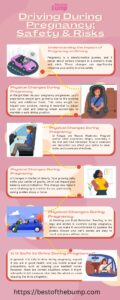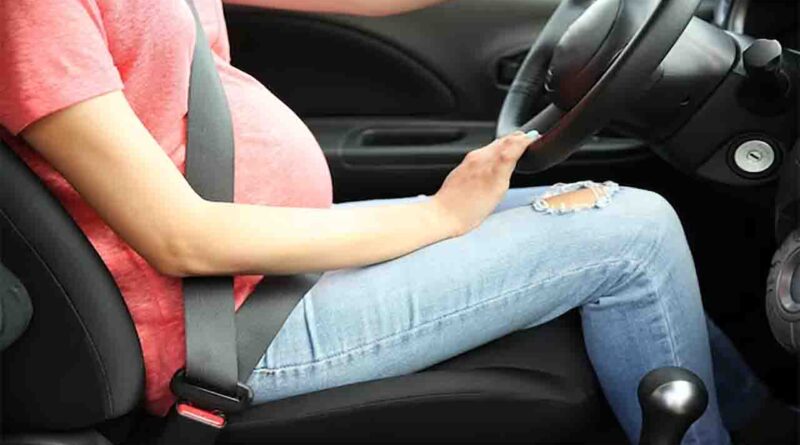Traveling Safely in Different Trimesters during Pregnancy
Know essential tips for traveling safely in different trimesters during pregnancy. From managing morning sickness to staying comfortable in the third trimester, this guide offers expert advice to ensure a smooth and enjoyable journey for expectant mothers. Learn how to adapt your travel plans and stay prepared for any situation, all while prioritizing your well-being and the health of your baby. Explore trimester-specific tips and considerations to make your travels memorable and worry-free.
Traveling during pregnancy can be an enjoyable experience if you take specific precautions and adapt to the changes your body goes through during each trimester. In this chapter, we’ll provide travel tips tailored to each trimester of pregnancy, from the first to the third, and address considerations for traveling near your due date.
Traveling Safely In Different Trimesters
Embark on a safe and comfortable pregnancy journey with trimester-specific travel tips. From managing early nausea to traveling near your due date, this guide provides expert advice for expectant mothers. Stay well-prepared and prioritize your well-being and your baby’s health while making memorable travel experiences in each trimester.
First Trimester Travel Tips
During the first trimester, you may experience morning sickness and fatigue. Here’s how to travel safely and comfortably:
- Timing: Plan your trips during the times of day when you feel most energized, which is typically during the mid-morning.
- Snacks: Pack ginger candies, crackers, or other nausea-relief snacks to combat morning sickness.
- Hydration: Stay well-hydrated to reduce the risk of dehydration, which can exacerbate nausea.
- Rest Stops: Plan for frequent rest stops to stretch and rest as needed.
Second Trimester Travel Tips
The second trimester is often referred to as the “golden trimester” due to increased energy and reduced morning sickness. Here’s how to make the most of it:
- Comfortable Seating: Continue adjusting your seat and steering wheel for maximum comfort as your body changes.
- Stay Active: Take short walks during rest stops to maintain circulation and reduce swelling.
- Hydration: Continue drinking plenty of water, especially during warmer months.
- Travel Insurance: Consider purchasing travel insurance that covers pregnancy-related complications in case of unexpected events.
Third Trimester Travel Tips
During the third trimester, you may experience increased discomfort and fatigue. Here’s how to travel safely during this time:
- Doctor’s Approval: Consult your healthcare provider before traveling during the third trimester to ensure it’s safe for you and your baby.
- Shorter Trips: Opt for shorter journeys and avoid excessively long drives.
- Frequent Breaks: Plan for more frequent rest stops to alleviate discomfort and reduce swelling.
- Luggage Assistance: Request help with luggage and heavy items to avoid straining yourself.
Traveling Near Your Due Date
Traveling near your due date requires special consideration:
- Doctor’s Approval: Get explicit approval from your healthcare provider for any travel during this time.
- Medical Records: Carry a copy of your medical records, including your due date, in case you need medical attention while away from home.
- Choose Destinations Carefully: Consider destinations with access to healthcare facilities in case of emergencies.
- Restful Stops: Plan for ample rest and overnight stays to avoid excessive fatigue.
- Emergency Kit: Ensure your vehicle is equipped with a well-stocked emergency kit and have contact information for local healthcare providers at your destination.
Traveling during pregnancy is possible and can be enjoyable with the right precautions and planning. Tailoring your travel plans to each trimester’s unique challenges and staying in close communication with your healthcare provider can help ensure a safe and memorable travel experience during this special time in your life.
Driving Safely While Petite
If you’re petite and struggling with reaching the pedals, modern cars often offer adjustable pedal systems. Additionally, you should adjust the steering wheel to tilt upwards toward your breastbone for comfort. However, if these adjustments aren’t possible and your belly is within 10 inches of the steering wheel, it’s safer to arrange alternative transportation with a friend or coworker. Safety should always come first, especially during pregnancy.
Driving After Giving Birth
The timing of resuming driving after giving birth depends on your specific circumstances. If you had a vaginal delivery with tearing or lacerations, or if you underwent a C-section, it’s essential to give your body ample time to heal before getting back behind the wheel. Typically, after a C-section, it may take 4 to 6 weeks before it’s safe to drive again. Always consult with your doctor for personalized advice on when it’s safe for you to drive after childbirth. If you require transportation to newborn or follow-up appointments during this time, seek assistance from others for your safety and the safety of your baby.
Should I Wear a Seat Belt During Pregnancy?
Absolutely, yes! Wearing a seat belt is not only a legal requirement but also your crucial first line of defense in case of a car crash. Dr. Rodeffer-Evans emphasizes its importance, even from an orthopedic perspective. Seat belts protect both you and your unborn child, so it’s essential to always buckle up when you’re in the car.
The Right Way to Wear a Seat Belt While Pregnant
To wear your seat belt correctly during pregnancy, place the lower strap under your abdomen, just above the hip bones, while ensuring it’s below your growing belly. The upper shoulder strap should cross your sternum (chest), avoiding the direct placement across your baby bump. Refer to the U.S. Department of Transportation’s infographic for a visual guide.
Prioritize safety for yourself and your baby while on the road.
Should I Inform My Doctor After an Accident During Pregnancy?
Absolutely, yes. While your body provides some protection during the first trimester, it diminishes as you progress into the second trimester. Regardless of the accident’s severity, it’s crucial to consult your doctor or a specialist for fetal monitoring after any collision. Even if you feel fine, a medical assessment is essential to ensure your baby’s well-being. Minor forces can pose risks, particularly to the placenta. This is especially critical if you are Rh negative and your baby is Rh positive, as contact between your blood and the babies can be fatal without proper treatment, such as the RhoGAM shot.
Is It Safe to Take Long Road Trips During Pregnancy?
Before embarking on a long road trip during pregnancy, it’s essential to consult with your doctor to ensure it’s safe for you to travel. If your doctor gives the green light, consider the following tips:
- Take Regular Breaks: Plan pit stops at least every two hours to stretch your legs and improve blood circulation. Pregnant women are at a higher risk of developing blood clots or deep vein thrombosis, so these breaks are crucial for your safety.
- Stay Hydrated: Drink plenty of water throughout the trip to stay well-hydrated, especially if the journey is long.
- Choose Your Timing: Consider traveling during your second trimester when you’re likely to feel your best and experience fewer pregnancy-related discomforts.
Additional Driving Tips for Pregnant Moms
- Listen to Your Body: If you’re experiencing dizziness, excessive fatigue, or nausea, it’s best to avoid driving until you’re feeling better. Your safety and the safety of your baby should always come first.
- Drive Smoothly: To minimize discomfort while driving, avoid sudden braking and sharp, fast turns. A smoother driving style can help you stay comfortable and reduce the risk of motion sickness.
- Check Airbags: Ensure that your vehicle’s airbag system is turned on. Modern airbags are designed to be safe for pregnant women and can provide additional protection in the event of an accident.
- Install a Car Seat: Prepare for your baby’s arrival by purchasing and properly installing a car seat well before your due date. Make sure it’s correctly secured and ready for use when your little one arrives.
- Seek Professional Guidance: If you have any questions or concerns about driving during pregnancy, don’t hesitate to consult your doctor or midwife. They can provide personalized advice and address any specific worries you may have. Your well-being and the well-being of your unborn child are of utmost importance.
Remember that while driving during pregnancy is generally safe, it’s essential to prioritize safety, comfort, and communication with your healthcare provider throughout your journey. If in doubt about your health or your baby’s well-being, it’s better to refrain from driving until you receive professional guidance and feel confident about your ability to drive safely.

See This Also –
- Safe Driving in Pregnancy for Expectant Mothers
- Driving During Pregnancy: Safety, Risks, and When to Stop
- Olive Oil Recipes and Applications for Expectant Mothers
- Olive Oil During Pregnancy
- Can twins cause false negative pregnancy tests?
- Is Diarrhea a Sign of Pregnancy?
- What are the Benefits & Side Effects of Olive Oil in Pregnancy?
- Is Bloating a Sign of Pregnancy?




